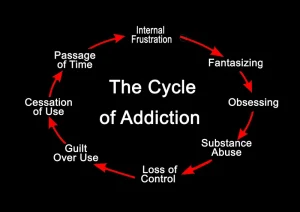
It’s important to find a provider who is trained in CPT, or who has received a certification in it; you can search for such therapists on the Psychology Today therapy directory or ask your doctor or mental healthcare provider for a referral. Many hospitals run by the Department of Veteran’s Affairs also offer CPT treatment programs specially designed for military veterans. Patients may be asked to write about the specific events of their traumatic experience, including any sensory details that they remember, or they may be asked to write more broadly about how their experience makes them feel and how they tend to think about what occurred. If the patient is in individual therapy, they may read these statements aloud during a session; the same is usually not required for group therapy. CBT therapists educate clients about their diagnosis and about CBT, help them set goals, and teach essential thinking and behavioral skills. CBT for PTSD includes the development of coping mechanisms to help clients handle thoughts and emotions related to the traumatic event.

What are the risk factors for PTSD?
Criteria involving age or gender were not applied as the available evidence does not suggest that these factors affect treatment outcomes for PTSD (Etkin & Wager, 2007; Jun, Zoellner & Feeny, 2013). Samples that included comorbid disorders were excluded on the basis that they may detract from PTSD as the focus of the review. Information regarding dropout rate was included as high dropout from CBT exposure therapy has been suggested as a significant factor influencing clinical practitioners’ decisions regarding the chosen course of treatment (Follette & Ruzek, 2007; Zayfert et al., 2005). All study designs were included in the review on the basis that PDT has few RCTs investigating its effectiveness. Suggesting reasons why CBT may be underutilised by practitioners, van Minnen, Hendriks and Olff (2010) report lack of training and experience, perceived credibility, fear of increasing distress or exacerbating symptoms as pertinent factors. Cahill et al. (2006) and Follette and Ruzek (2007) also highlight concerns about the safety of exposure therapy, with exposure elements of CBT causing further emotional distress (Gaston, 2015).
Diagnostic and statistical manual of mental disorders (DSM-
If you’re not sure where to get help, a health care provider can refer you to a licensed mental health professional, such as a psychiatrist or psychologist with experience treating PTSD. Find tips to help prepare for and get the most out of your visit and information about getting help. The retention of original treatment strategies and procedures in these digital formats varies, but their effectiveness in various forms remains promising (Fairburn & Patel, 2018; Spijkerman et al., 2016). The ongoing development of these technologies, combined with rigorous research, continues to enhance the efficacy and reach of electronic psychotherapy. She has over a decade of experience specializing in trauma and depression, working primarily with first responders, military personnel, and veterans, and sexual assault survivors.
How can I find help for PTSD?

All participating clinicians were trained to use the CBT models and received case consultation for 18 months by expert clinician consultants and the treatment developers.117 This exercise can provide a model for implementing CBT in communities following massive disasters. Although studies examining PDT for the treatment of PTSD are limited, (Ponniah & Hollon, 2009), some have demonstrated its effectiveness. Using a short‐term 12‐session psychodynamic treatment approach targeting symptoms of PTSD in combat veterans, Hendin (2014) found that treatment successfully reduced symptoms of PTSD and suicidal behaviours. A review by Ponniah and Hollon (2009) found one randomised control trial (RCT) (Brom et al., 1989) comparing PDT to a control condition; patients treated with PDT reported a significant decrease in PTSD symptoms compared to a control group and a waitlist control condition. Continued improvement after treatment ends has also been reported for PDT, suggesting it may help address crucial areas in clinical presentation of PTSD and the sequelae of trauma not currently targeted by empirically supported treatments (Schottenbauer et al., 2008).

One of the key benefits of e-CBT is the privacy and anonymity it offers, which is particularly important for individuals reluctant to seek in-person therapy due to stigma or fear of judgment (March et al., 2018; Schmotz et al., 2024). This increased sense of privacy has been linked to higher engagement rates in online therapy programs (Staples et al., 2019). For instance, a study published in JAMA Network Open found that 74.7% of participants in a computer-assisted CBT (CCBT) program completed their treatment, which is higher than the 58.3% average completion rate reported in a meta-analysis for traditional CBT in primary care settings (Wright et al., 2022). Overall, the automation of psychotherapy holds promise for expanding access and enhancing the efficiency of mental health care.
- Significant associations have also been reported between PTSD and depression, and between PTSD and self‐reported health problems (Possemato, Wade, Andersen & Ouimette, 2010).
- In the UK, Walker and Turner (2016) raise particular concerns regarding underutilisation of exposure‐based techniques for PTSD and highlight how ‘therapist drift’ can undermine therapeutic effectiveness.
- Despite evidence supporting cognitive behavioural therapy (CBT)‐based interventions as the most effective approach for treating post‐traumatic stress disorder (PTSD) in randomised control trials, alternative treatment interventions are often used in clinical practice.
According to Foa et al. (2013) and Javidi and Yadollahie (2012), the majority of the population, 60.7% of men and 51.2% of women, are exposed to a traumatic event at some point during their lifetime which has the potential to trigger the onset of PTSD. The incidence of PTSD is reported to be as high as 6.8% in the US, increasing in military personnel and veterans of war in Iraq and Afghanistan to 13.8% meeting DSM diagnostic criteria for PTSD (Kearns, Ressler, Zatzick & Rothbaum, 2012). PTSD tends to have a chronic course, with 40% of sufferers experiencing symptoms to a significant degree, years after initial onset (Kearns et al., 2012).

The Substance Abuse and Mental Health Services Administration has a online treatment locator to help you find mental health services in your area. Some of these factors are present before the trauma; others become important during and after a traumatic event. Use these free education and outreach materials in your community and on social media to spread the word about mental health and related topics.
This limitation has spurred interest in adapting psychotherapy to electronic formats, potentially enhancing accessibility and adherence (Mishkind et al., 2021a). In this study, PTSD animals demonstrated recall of traumatic memories, anxiety, and an impaired social behavior, while animals subject to both mTBI and PTSD had a pattern of disinhibitory-like behavior. In comparison with other animal studies,[313][314] examination of neuroendocrine and neuroimmune responses in plasma revealed a trend toward increase in corticosterone in PTSD and combination groups. Fortunately, treatments like cognitive behavioral therapy are now available to support this type of trauma healing. But there was a time when we didn’t know anything about how trauma can alter the neural pathways in the brain.
How can I help a friend or relative who has PTSD?
There is a need for more studies in developing countries following disasters that affect huge populations. CBT for PTSD following massive disasters should be studied with high methodological rigor given its public health importance. The preventive potential of early CBT needs further confirmation, considering the enormous number of at-risk individuals. Tong and cbt interventions for substance abuse colleagues (Tong et al., 2022) highlight concerns such as the potential for information overload, poor information quality, and the possibility of harm from poorly designed interventions. Moreover, there is often a lack of rigorous scientific and scholarly evaluation for these digital therapies, which can lead to variability in their effectiveness and safety.
For instance, a study by Carlbring et al. (2018) reported that e-CBT demonstrated an average effect size of 0.78 for reducing symptoms of depression, which is comparable to face-to-face therapy. Similarly, Karyotaki et al. (2021) found that e-CBT for anxiety disorders yielded an effect size of 0.88, highlighting its effectiveness. Before we explore cognitive behavioral therapy in more depth, let’s first review some common signs of PTSD and what we mean when we say that someone has post-traumatic stress disorder. Evidence relating to the efficacy of both CBT and PDT is reviewed and factors identified as relevant to practitioners’ decisions regarding treatment approach are considered in the light of the evidence.

